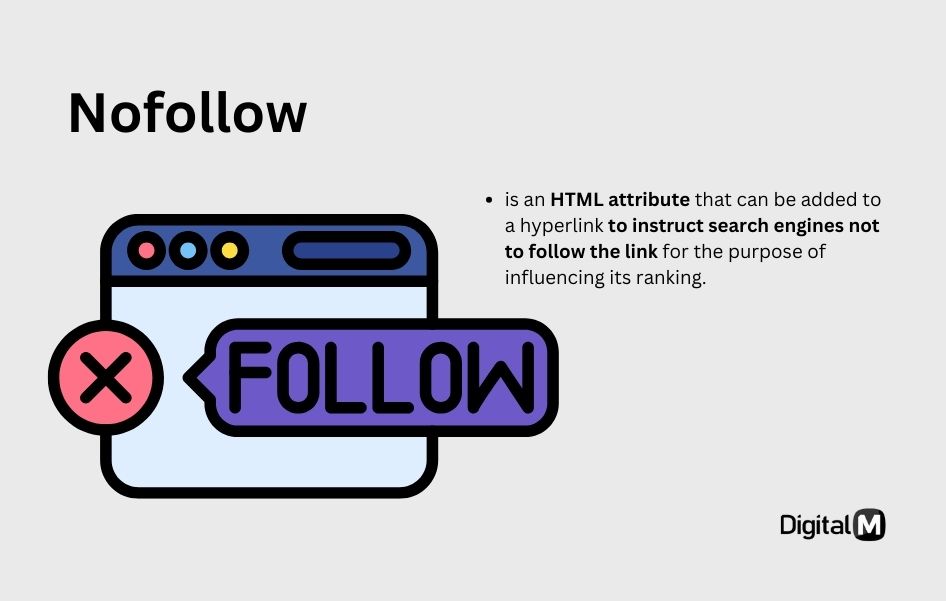Nofollow
Nofollow is an HTML attribute that can be added to a hyperlink to instruct search engines not to follow the link for the purpose of influencing its ranking. It was introduced to combat spam and prevent the manipulation of search engine results through excessive link building.
When a website uses the nofollow attribute on a link, it’s like telling search engines, “Don’t consider this link as an endorsement or recommendation.” It is commonly used to mark links that should not pass authority or influence search rankings.

Key Points:
Preventing SEO Influence: Links with the nofollow attribute don’t contribute to the linked page’s search engine ranking or authority.
Introduced for Spam Control: Nofollow was introduced to combat spammy practices, such as comment spam on blogs and excessive link building solely for SEO manipulation.
To implement a nofollow link, the rel="nofollow" attribute is added to the HTML anchor tag (<a>). For example:
<a href=“https://example.com” rel=“nofollow”>Visit Example.com</a>
Use Cases:
User-Generated Content: Nofollow is often applied to links within user-generated content, such as blog comments, to discourage spam.
Sponsored Links: Links associated with sponsored content or advertisements may use nofollow to comply with search engine guidelines.
Impact on SEO:
While nofollow links don’t directly contribute to the linked page’s SEO, they still have value in terms of referral traffic, user engagement, and overall online visibility.
Evolution of Nofollow:
Google introduced additional link attributes like sponsored and ugc to provide more context about the nature of links. For example, rel=”sponsored” can be used for paid or sponsored links.
Example:
A blog owner adds the nofollow attribute to links in the comment section to discourage spammers from attempting to manipulate search rankings by including links in their comments.
Why it Matters:
Spam Prevention: Nofollow helps prevent spam by discouraging the insertion of irrelevant or low-quality links in user-generated content.
Search Engine Guidelines: Adhering to nofollow guidelines ensures compliance with search engine policies, which is essential for maintaining a website’s reputation.
Referral Traffic: While nofollow links don’t pass SEO authority, they can still drive valuable referral traffic to the linked website.
In summary, nofollow is an HTML attribute used in hyperlinks to instruct search engines not to follow the link for ranking purposes. It was introduced to combat spam and has become an important tool for maintaining the integrity of search engine results and adhering to guidelines set by search engines.

